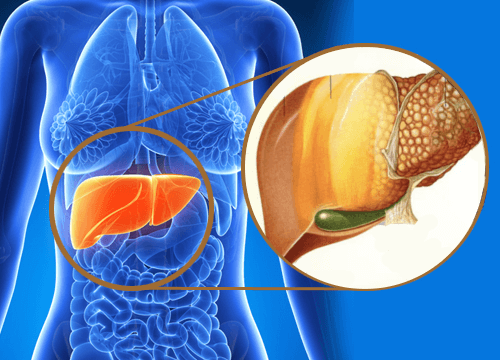


A fatty liver is characterized by presence of excess fat in the cells of liver. Fat gets accumulated gradually in the liver cells of a person when the diet exceeds the quantity of fat their body can metabolize. Fatty liver is said to be present when approximately 5% of the liver is made up by fat. Though a mild condition, fatty liver makes the liver vulnerable to further damage, resulting in scarring and inflammation of the liver.

You may have fatty liver but have no symptoms. Fatty liver often does not produce any symptoms initially. You may have symptoms after many years or even decades. Some of the symptoms you may get are:
Your liver may enlarge and you may experience other symptoms such as pain in the right upper part of your abdomen and presence of dark-colored patches on the skin of neck and underarms.
You may also develop cirrhosis or scarring of liver. This may produce the following symptoms:
After discussing the fatty liver symptoms, then how is it diagnosed? Since it does not produce symptoms in the initial stages, diagnosing fatty liver is not easy. Abnormal liver function tests done for some other reasons may raise suspicion. To diagnose fatty liver, your physician will:
You physician will enquire about your use of alcohol to determine whether your fatty liver is non-alcoholic fatty liver disease (NAFLD) or alcoholic fatty liver. He/she will also enquire about your medicines so as to determine if any medicine you are taking is causing NAFLD.
Since symptoms are not easy to detect, an early test will be important in early diagnosis and prevention of further damage. Non-alcoholic fatty liver is more common in the following individuals; hence, they should get their liver tested more often:
Approximately 25% of individuals in the world are affected by NAFLD. As the rates of type 2 diabetes, obesity and increased cholesterol are rising in the world, so is the rate of occurrence of NAFLD.
Alcoholic fatty liver occurs in people who drink excessive amount of alcohol, especially those who are drinking for a long duration of time. The risk is even greater for heavy drinkers who are females, have obesity or have some types of genetic mutations.
The disease is treatable. The fatty liver symptoms can be managed and even reversed.
The first and the most important step to manage alcoholic fatty liver disease is to quit drinking. You can consult a therapist or participate in a recovery program if you require help in quitting the habit. Certain medicines are also available that help in quitting alcohol, either by making you sick if you drink or by decreasing your cravings.
The first step to manage NAFLD is to lose excess weight by following a regimen of regular exercise and healthy diet. Weight loss is important as it addresses the problems that lead to NAFLD. Ideally it is desirable to lose 10% your body weight; however, even losing 3-5% of your initial weight can make apparent the improvement in risk factors. If you require losing a large amount of weight, then you can undergo a weight loss surgery.
Control of diabetes and levels of triglycerides and cholesterol are also important not only for treatment of NAFLD. Patients suffering from celiac disease who consume a strict gluten-free diet may be able to reverse the accumulation of fat in the liver and avoid development of fatty liver symptoms.
You should get yourself vaccinated for flu, hepatitis A and B, and pneumococcal disease. Liver failure is more likely to develop if fatty liver occurs in association with hepatitis A or B. Persons suffering from chronic liver disease are more prone to infections; hence, the other two vaccines are also important.
In people who develop cirrhosis as a result of fatty liver, transplantation of liver may be an option.
Alternative Medicine
Some natural compounds are said to be helpful, such as: